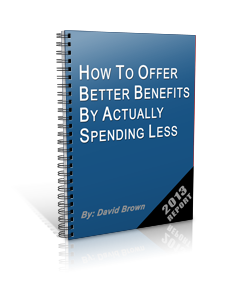 We can begin looking at what is considered affordable coverage by defining what the Employer Shared Responsibility Mandate is. If you are considered to be a Large Employer, you will be subject to a penalty if you fail to offer minimum essential coverage.
We can begin looking at what is considered affordable coverage by defining what the Employer Shared Responsibility Mandate is. If you are considered to be a Large Employer, you will be subject to a penalty if you fail to offer minimum essential coverage.
 The offering of Affordable Coverage can have adverse effects on your employees as they will not qualify for any Health Insurance Subsidies from the Government. We have several strategies that can help your business and employees use Safe Harbors to benefit your business and each of your employees.
The offering of Affordable Coverage can have adverse effects on your employees as they will not qualify for any Health Insurance Subsidies from the Government. We have several strategies that can help your business and employees use Safe Harbors to benefit your business and each of your employees. How is Affordable Coverage determined for Your Employees?
As an employer, you will not know what an employee’s household income or the availability for a employee to receive subsidized health insurance through the Exchange (coveredca), therefore the IRS has created specific Safe Harbors tests for employers to be able to determine if the coverage they are offering to their employees will be deemed “Affordable Coverage”. We have outlined the three standard Safe Harbor tests in the act:
- Form W-2: Affordability under this Safe Harbor is determined after the end of the year. The coverage is affordable if the employee’s contribution for the year does not exceed 9.5% of the W-2 Box 1 wages. Special rules apply for partial years. Note that wages as reported in Box 1 do not include pre-tax 401(k) deferrals or cafeteria plan salary reduction contributions.
- Rate of Pay: The employee’s required monthly contribution is affordable if it does not exceed 9.5% of the monthly wage. Monthly wages are determined at his or her beginning of the year as an amount equal to the hourly rate of pay times 130 for hourly employees, and the monthly salary for salaried employees. The Safe Harbor is not available if the hourly wage or salary is reduced during the year.
- Federal Poverty Line: The employee’s cost for the coverage is affordable if it does not exceed 9.5% of the federal poverty line (FPL) for a single individual. The most recently published FPL as of the first day of the plan year for the health plan may be used. (See the FPL guidelines below)
An additional, optional safe harbor test would include:
“Look-Back Measurement Method” or Safe Harbor for Variable Hour Employees:
- The Measurement Period or Look Back Period – The period of time you have to determine if your employee is Full-Time.
- The Administrative Period – A defined amount of time you have to enroll the employee.
- The Stability Period – The length of time the Variable Hour Employee must be offered benefits regardless of the number of hours they work during this period of time. After the Stability Period is over, the process starts all over again.
Other Blog Posts you will find interesting about this information
Understanding the “Look-Back”, “Stability” and “Administrative” Period



